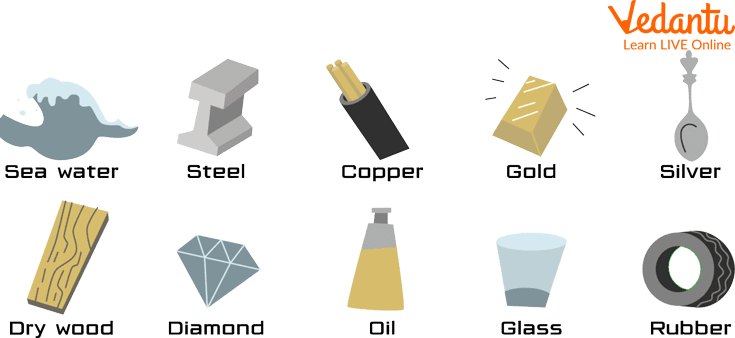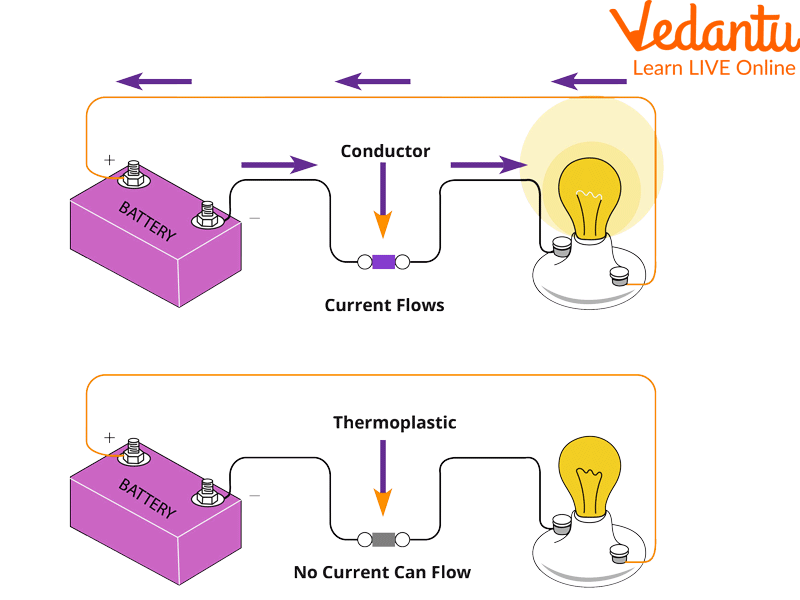




Introduction
Every material is unique and has unique qualities and traits. Electrons, which are charged electrically, are present in some materials. Specific locations on the material are charged with electrons, which cause the electrons to travel and cause electricity to flow through it. Conductivity is the property of a material that allows electricity to flow through it. Materials are categorised as conductors, insulators, or superconductors based on their conductivity.
Materials with high electron mobility are known as conductors, while those with low electron mobility are referred to as insulators. A good conductor of electricity is characterised as having a relatively simple electron flow. Let's learn about the characteristics of the most outstanding electrical conductor in this post.

Good and Bad Conductors
What is an Electrical Conductor?
The simplest definition of an electrical conductor is a material that makes it easy for electricity to go through it. A substance is said to be a good conductor of electricity when the substance is compared to another type of material, the first one permits a better flow of electricity through it.
Several types of electrical conductors include the following:
Copper
Aluminium
Silver
Gold
Graphite
Platinum
Water
People
Electric charges can easily pass through an electrical conductor. Conductivity is the ability of conductors to "conduct" electricity. Such materials provide less barrier to the movement of charges. Due to the unrestricted flow of electrons through them, conducting materials make it simple to transfer charges.
Bad Conductors of Electricity
Materials known as insulators have the exact opposite effect on the movement of electrons as do conductors. They make it difficult for electrons to move smoothly between atoms. Materials that have strongly bonded electrons in their atoms are called insulators. These electrons can't just go around and share space with nearby atoms.
Examples of Bad Conductors
Materials like glass, plastic, rubber, air, and wood are used as insulators.
We are shielded by insulators from the potentially harmful effects of electricity passing through conductors. Electrical circuits can occasionally have dangerously high voltage levels. Even materials that aren't typically thought of as good conductors can be made to conduct electricity when the voltage is high enough.
Several types of electrical bad conductors include the following:
Plastic
Rubber
Cloth
Polythene
Wood
Our Body as a Conductor
Our bodies will be electrically conductive and you might have already had this happen to you when you got an electrical shock. Generally, electricity hurts and is unpleasant to flow through the body. A powerful electrical shock and the current it produces can both impair the function of our hearts and can result in burns. Consequently, we must protect our bodies from the conductors, which transport electricity.
The rubbery layer on wires acts as an insulator to keep us from being exposed to the conductor inside. You can see the insulator in any lamp cord if you look closely. It's probably time to replace the cord if you can see the conductor.
Summary
Silver in particular makes metals excellent electrical conductors. Since copper is less expensive than silver, electrical wiring covering millions of kilometres is produced using it every year. Glass and plastic are examples of insulators since they are poor electrical conductors. They are employed to prevent electricity from passing into areas of our bodies where it is unsafe or unnecessary. The plastic covering on cables allows us to handle them safely.

Bulb Experiment
FAQs on Good Conductors and Bad Conductors of Electricity
1. Write the name of the non-metal which is a good conductor of electricity.
Materials like glass, plastic, rubber, air, and wood are used as insulators.
We are shielded by insulators from the potentially harmful effects of electricity passing through conductors. Electrical circuits can occasionally have dangerously high voltage levels. Several types of electrical bad conductors include plastic, rubber, cloth, polythene, and wood.
Even materials that aren't typically thought of as good conductors can be made to conduct electricity when the voltage is high enough. Such materials are called semiconductors. Like germanium and silicon are examples of semiconductors.
2. What are superconductors?
A substance known as a superconductor conducts electricity and offers no resistance to the flow of electrons. Heike Kamerlingh Onnes, a Dutch physicist, discovered the superconductivity phenomena in 1911. When chilled below a specific threshold temperature, certain elements or metallic alloys lose their electrical resistance property and turn into superconductors. Superconductors made of niobium, cuprate, magnesium, and diboride are among the best. Superconductors have one speciality: they do not allow the magnetic field line to pass through them.









